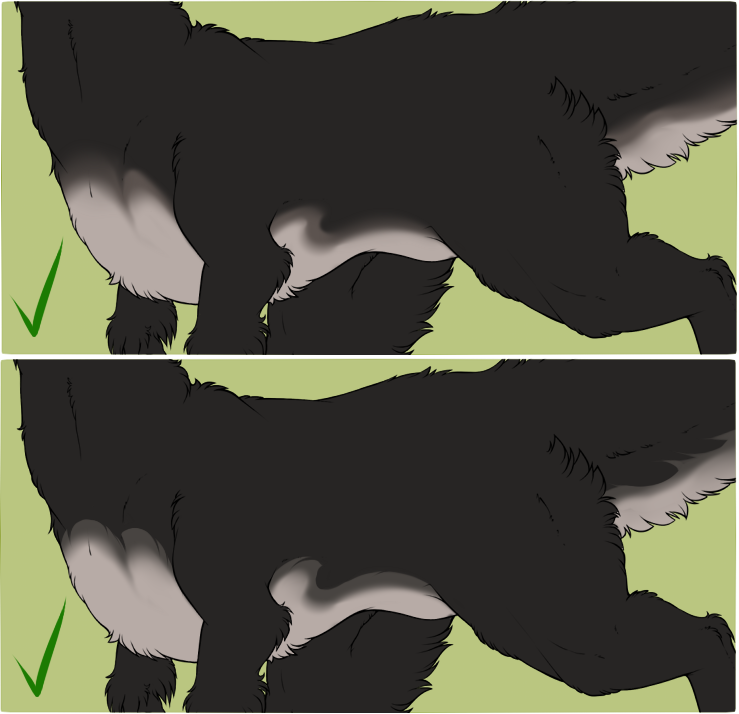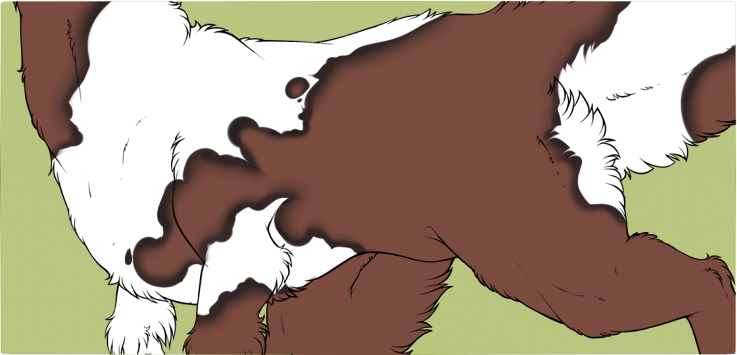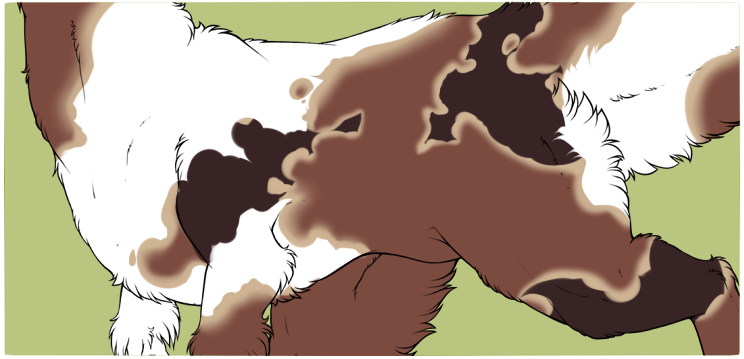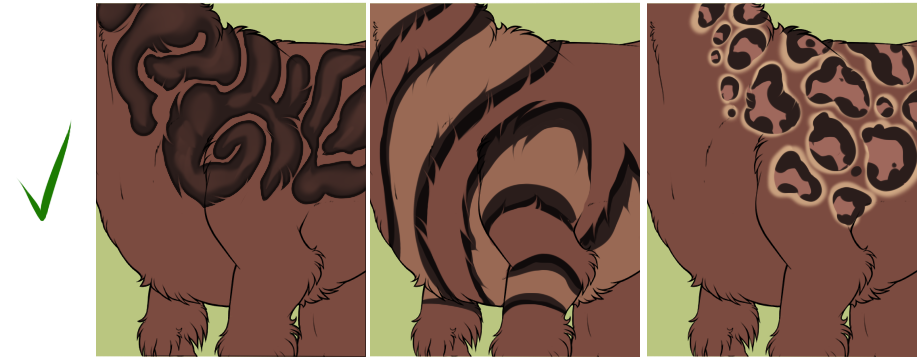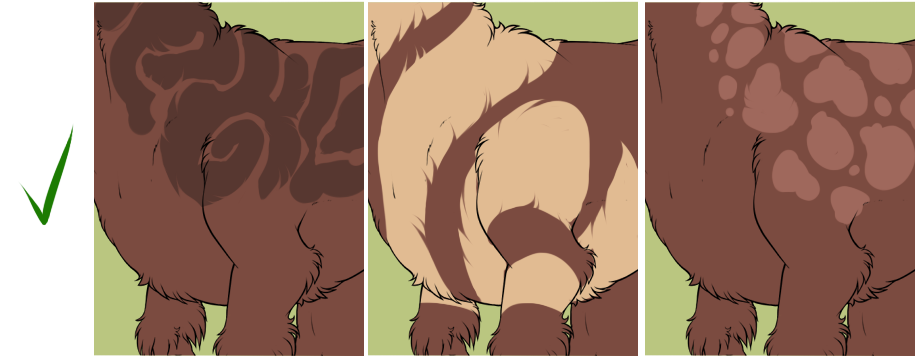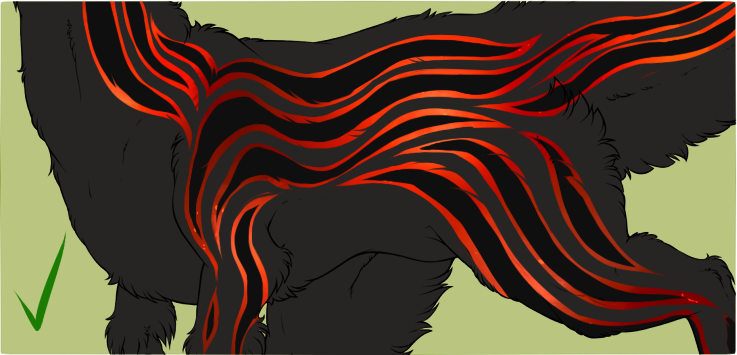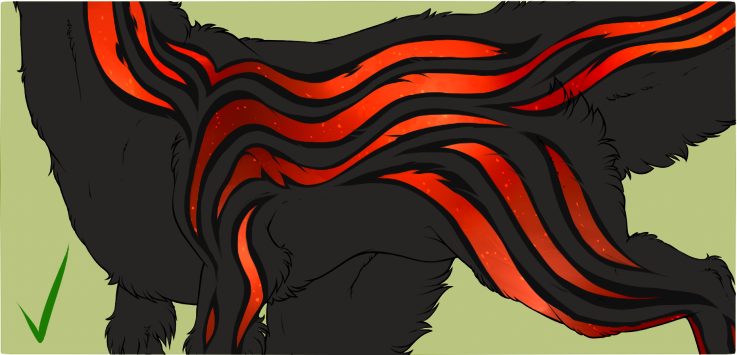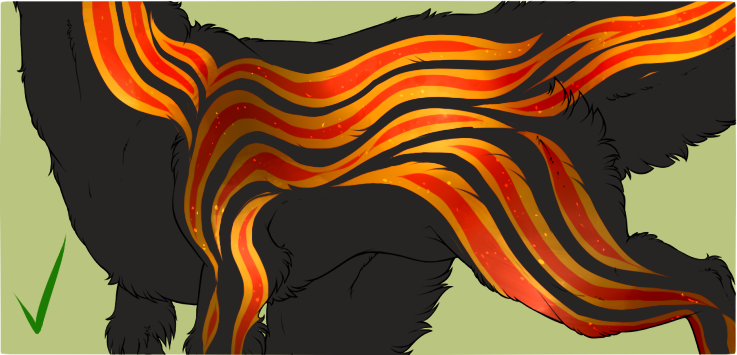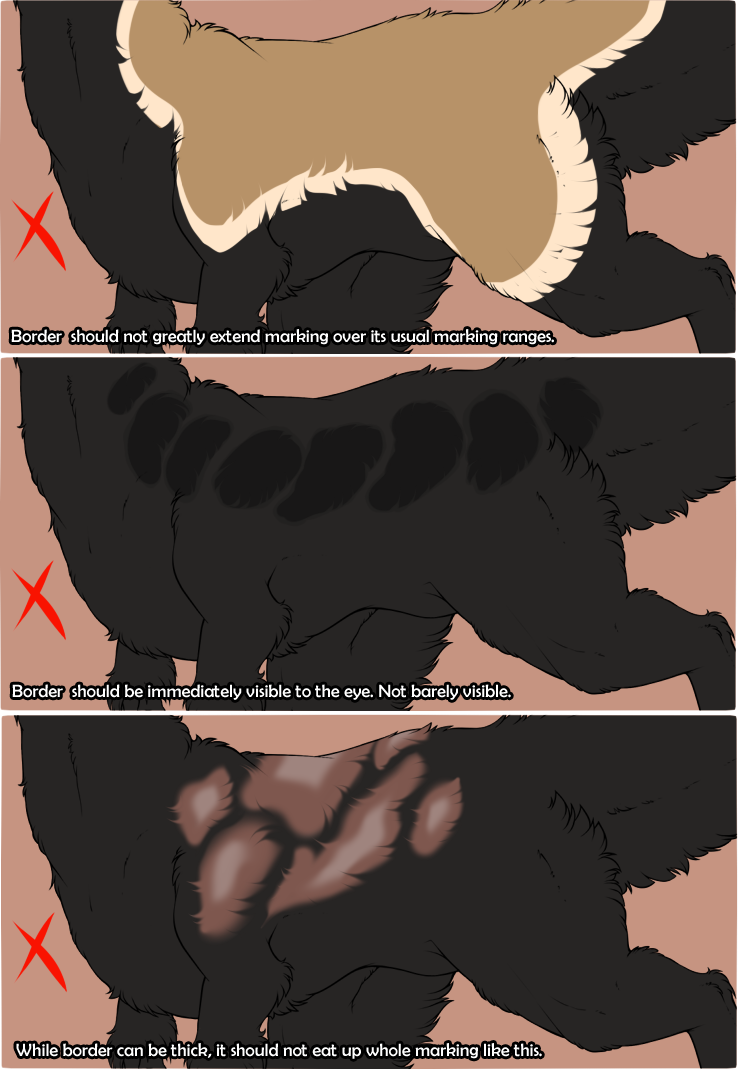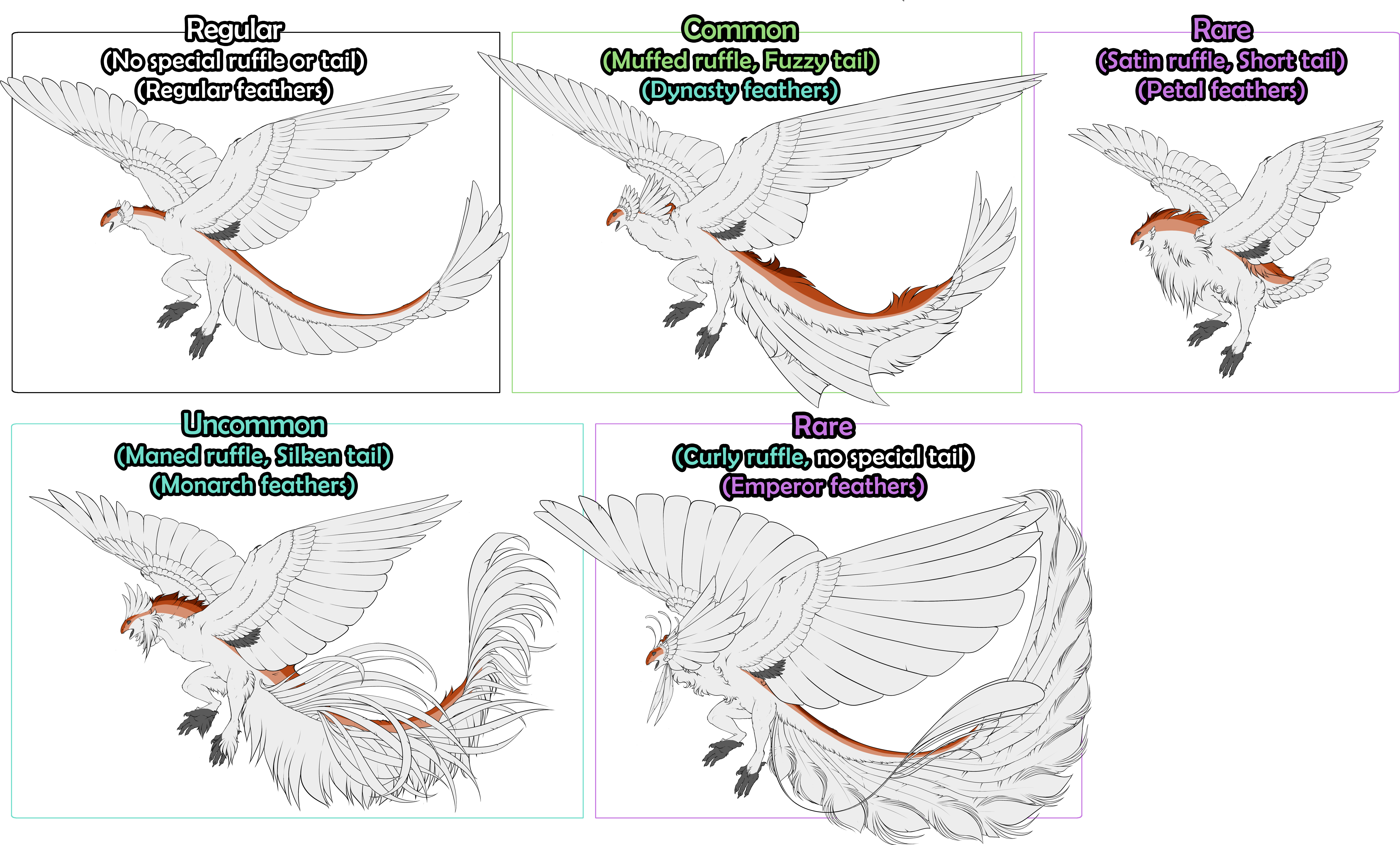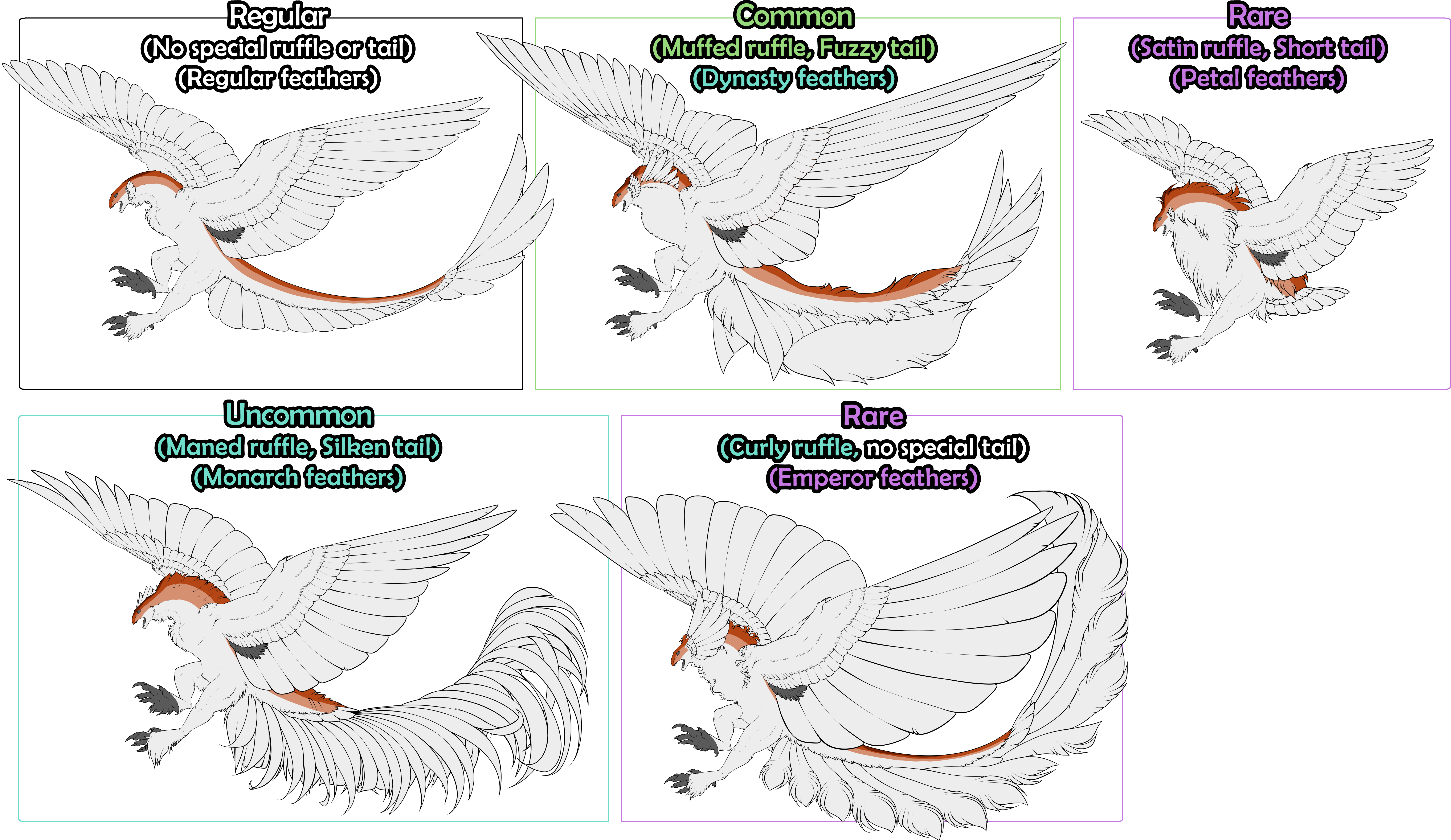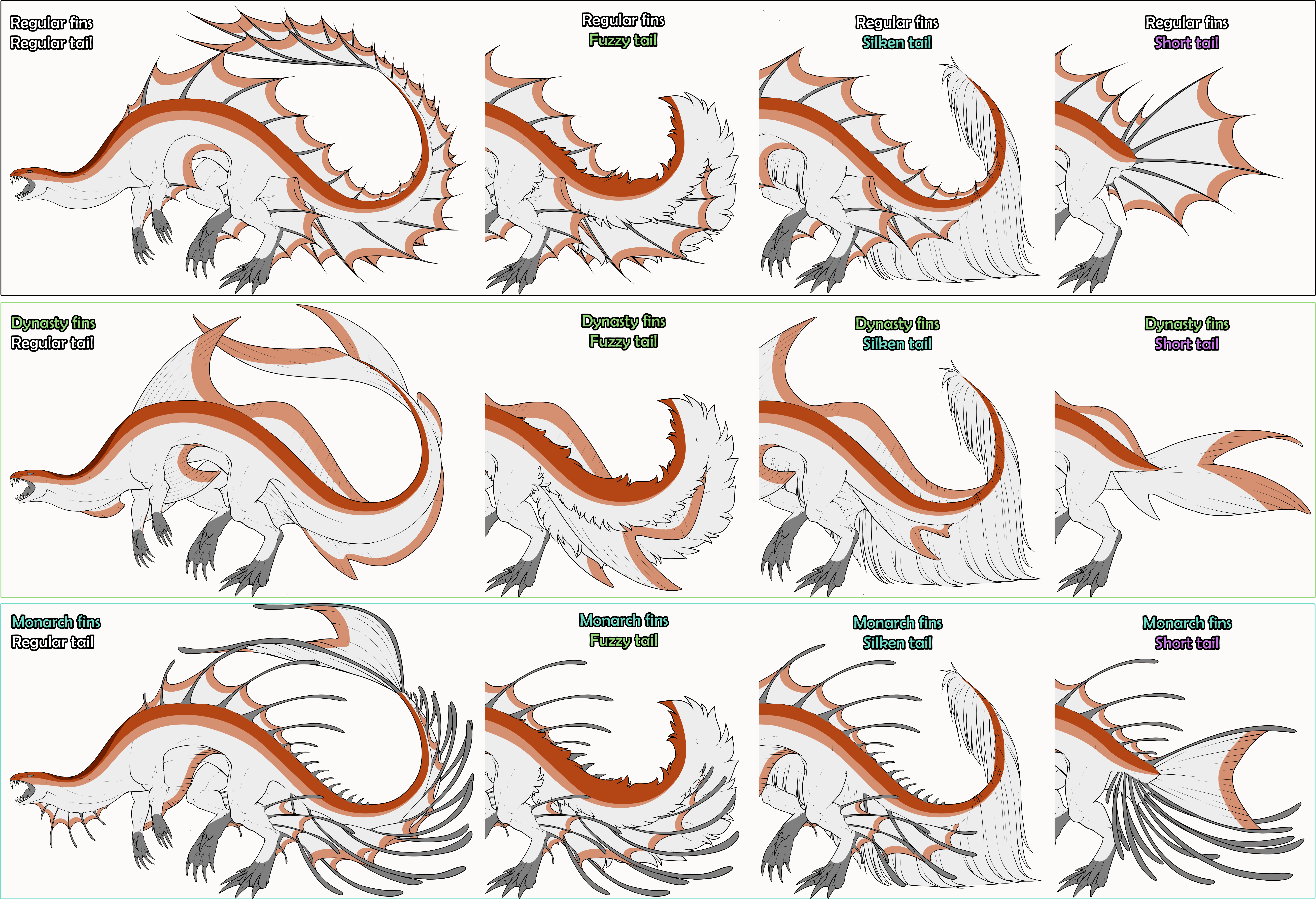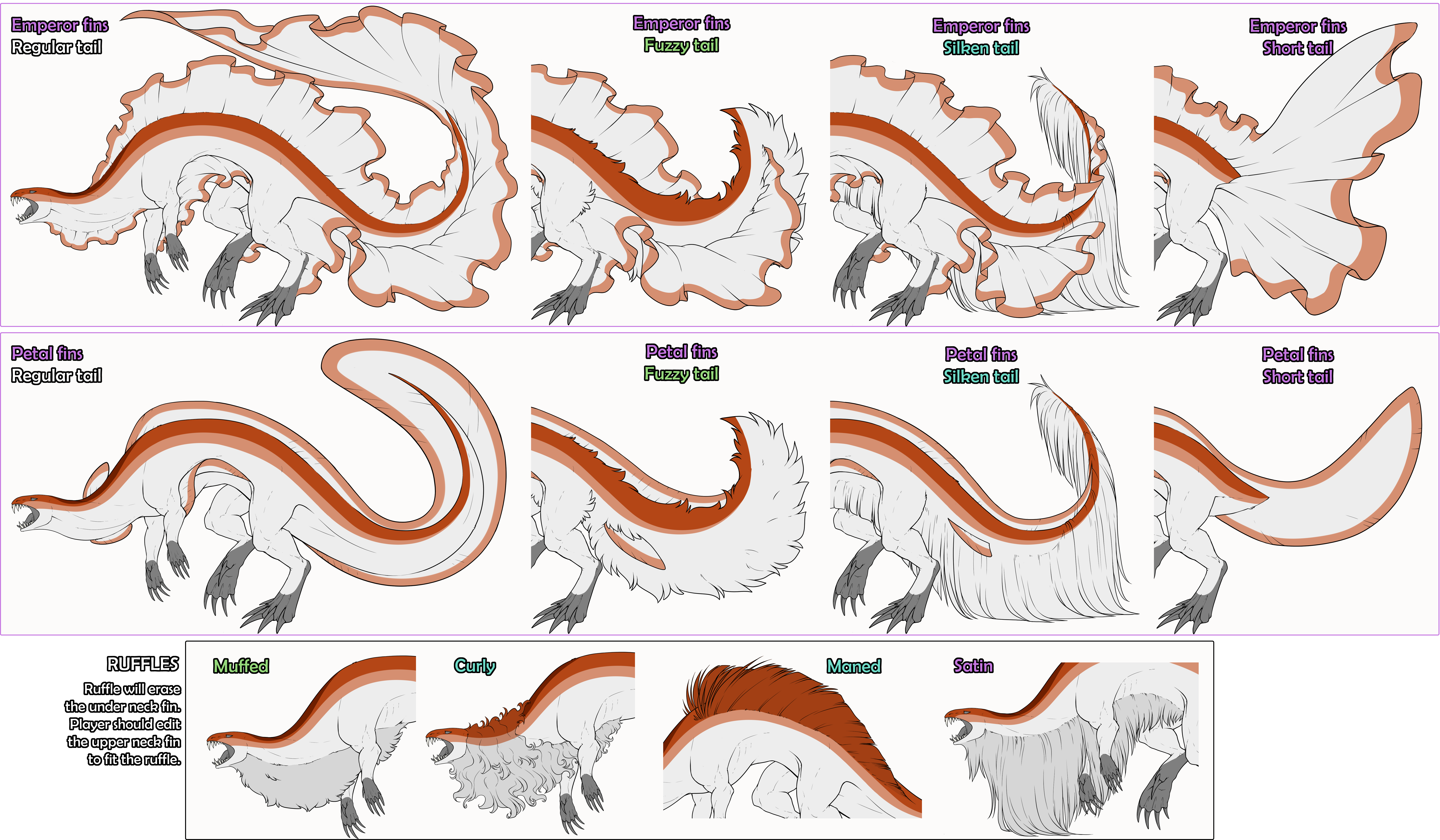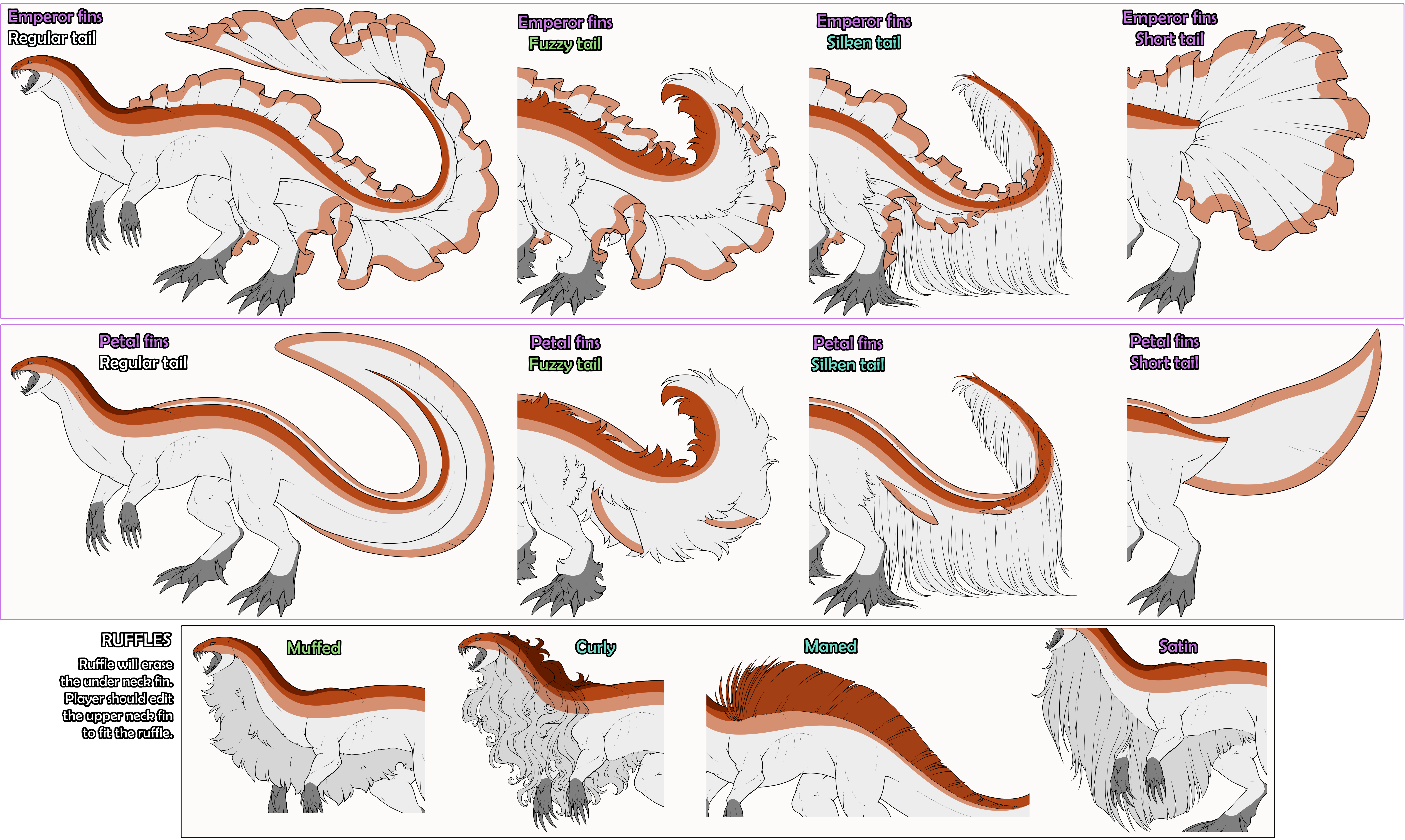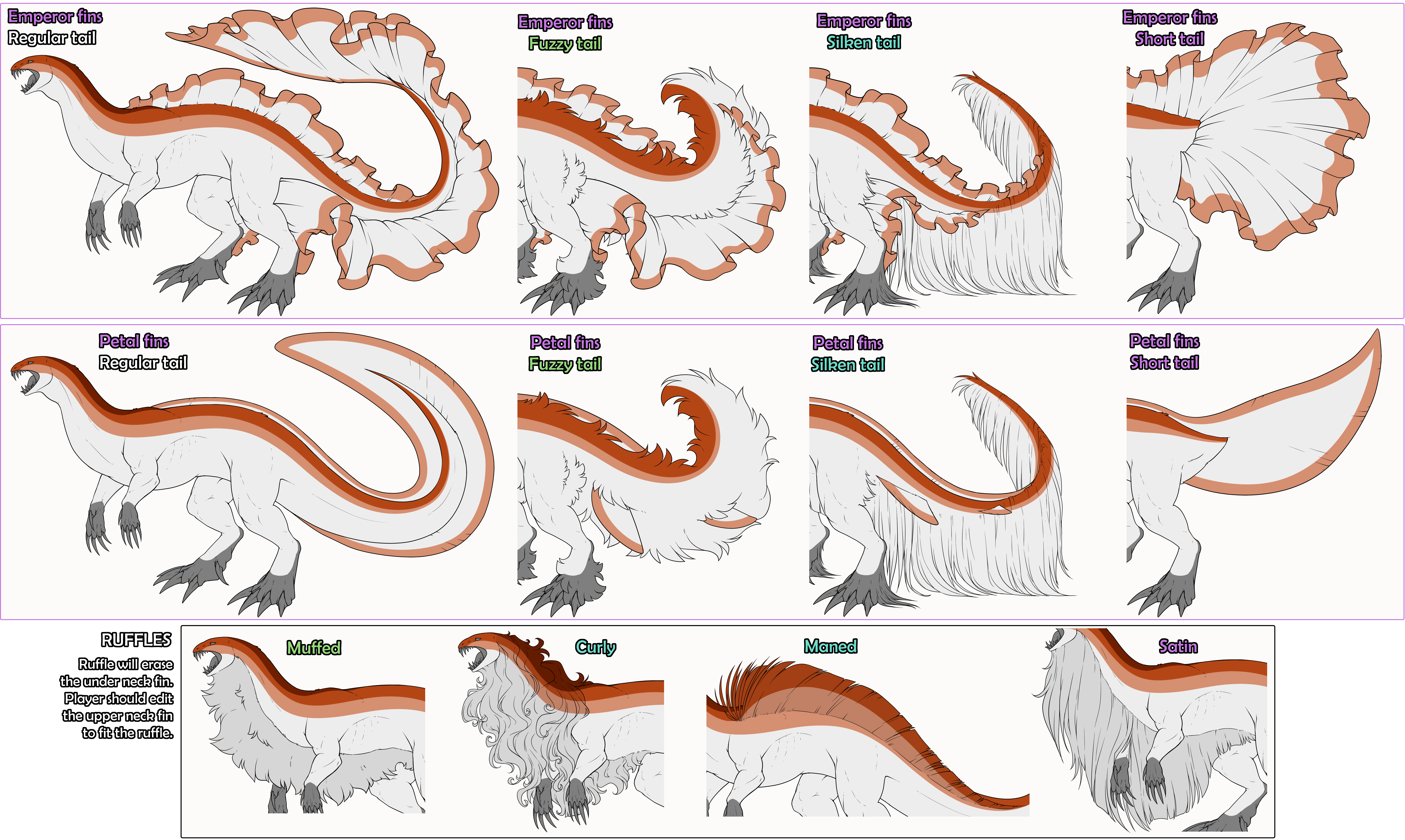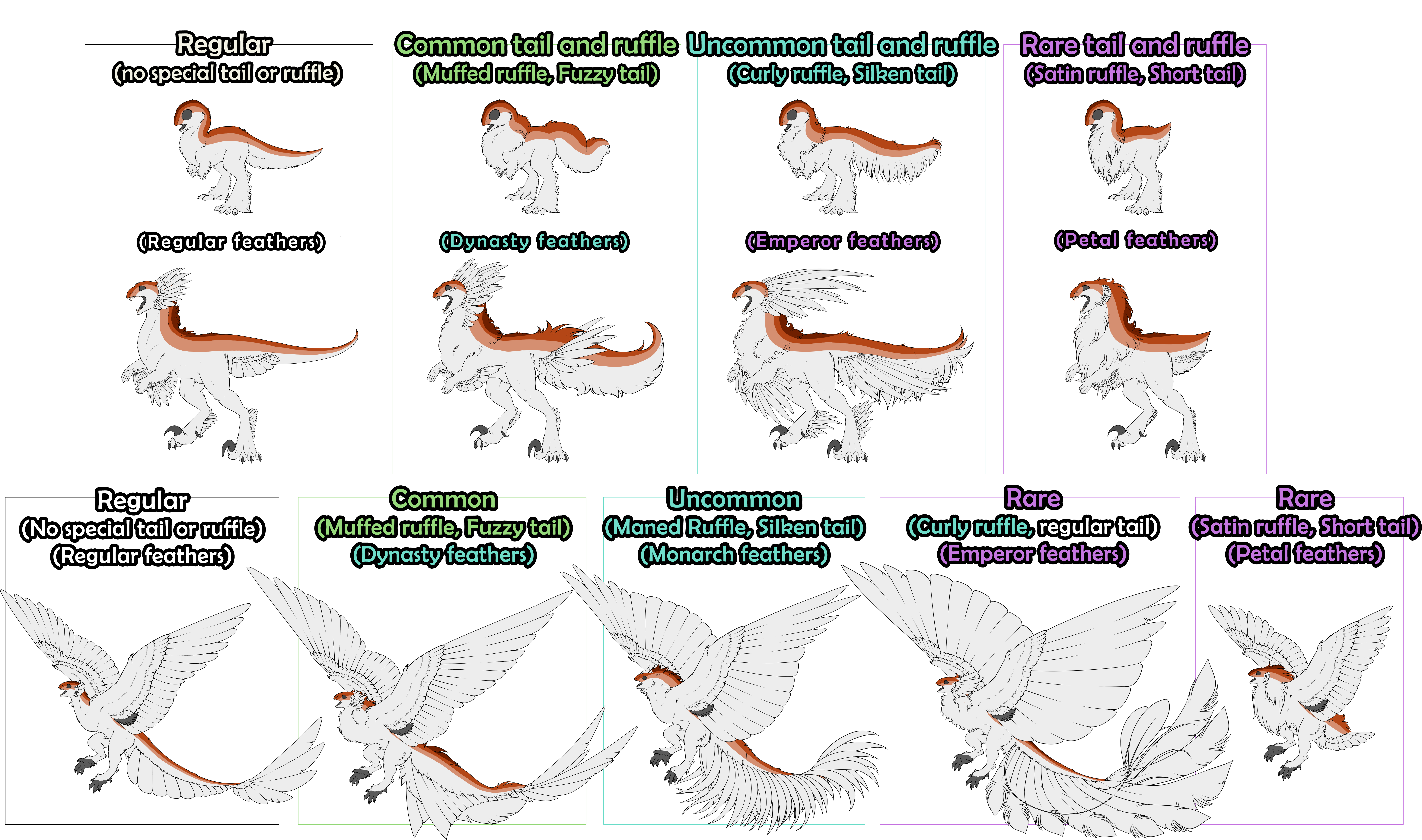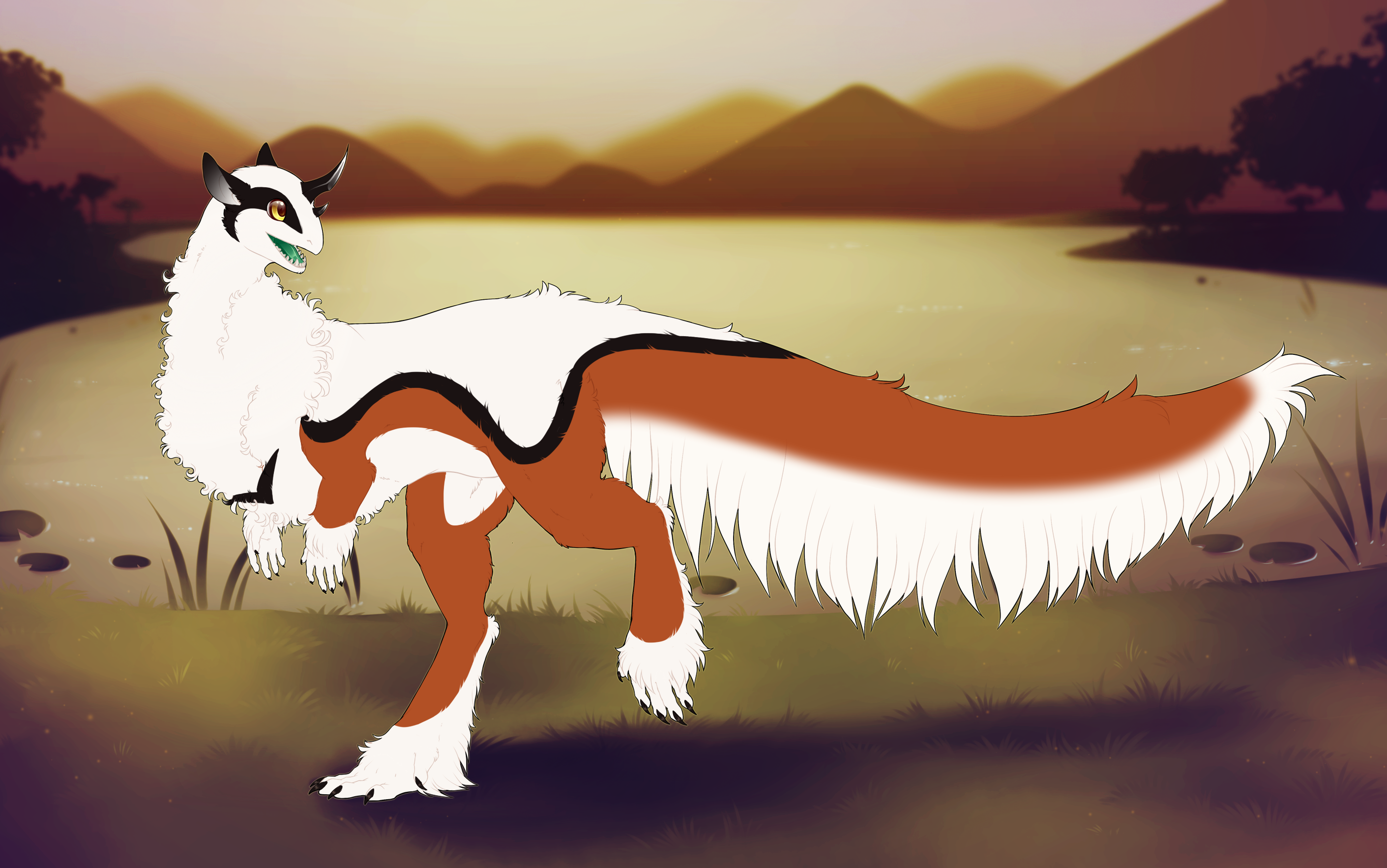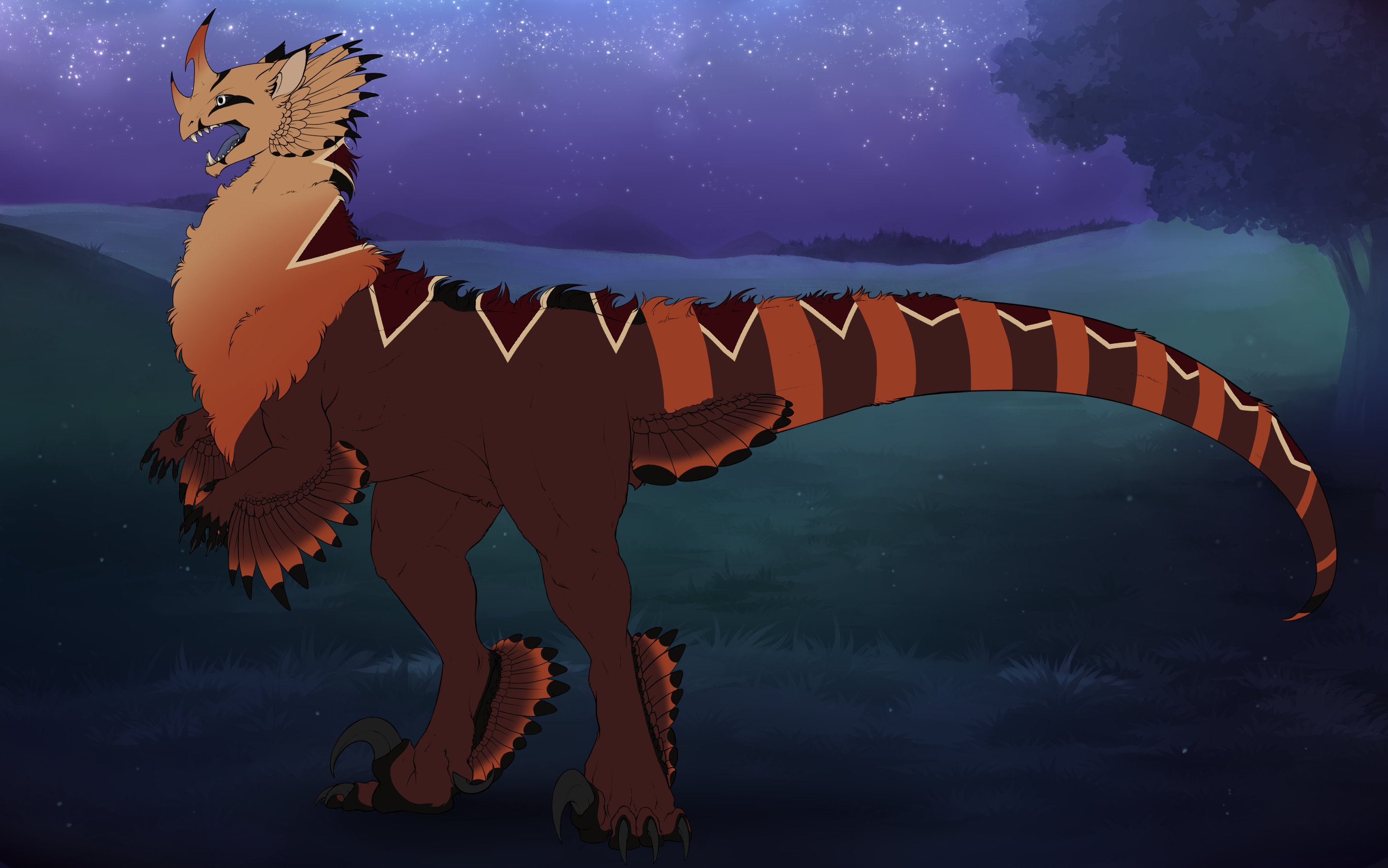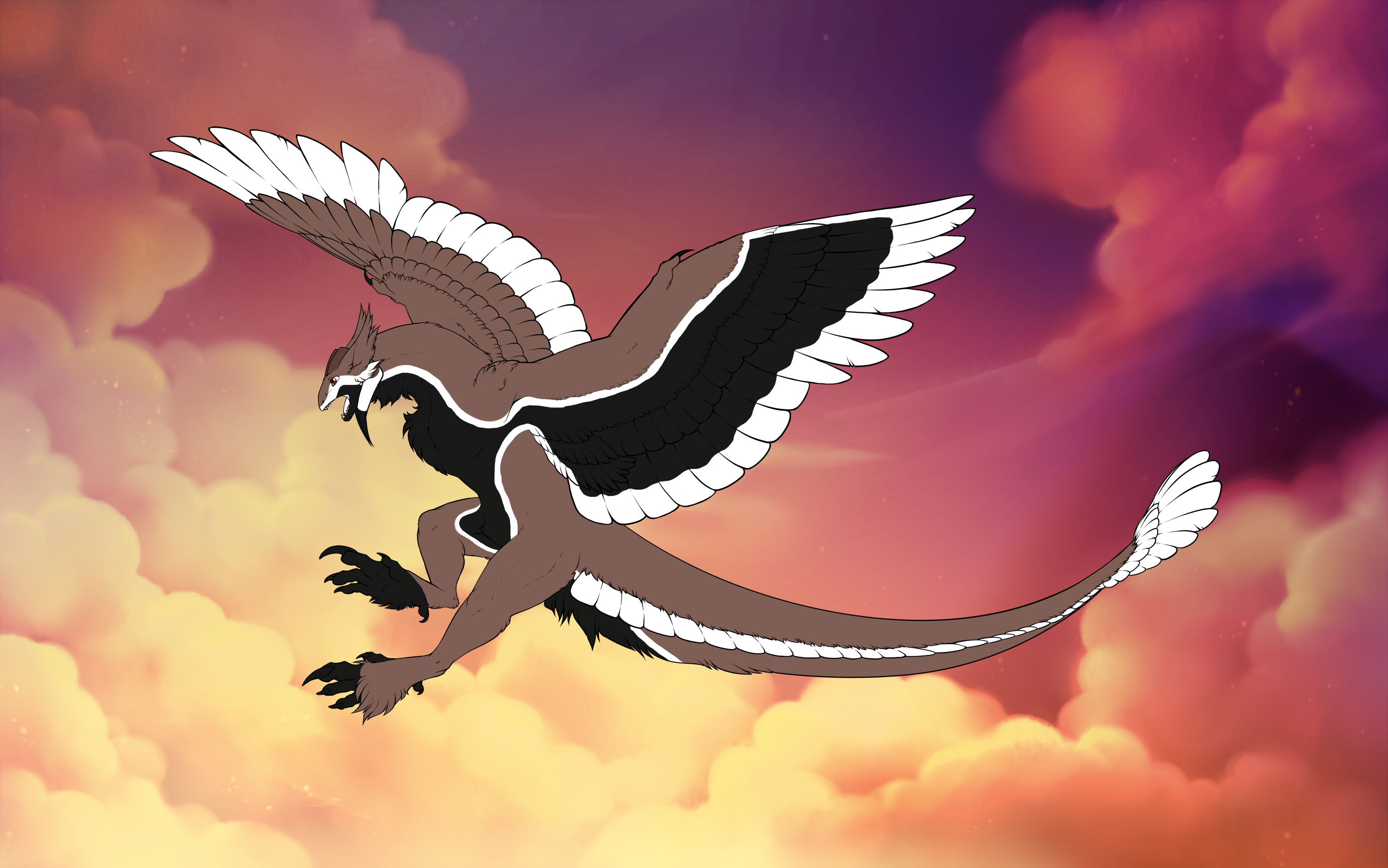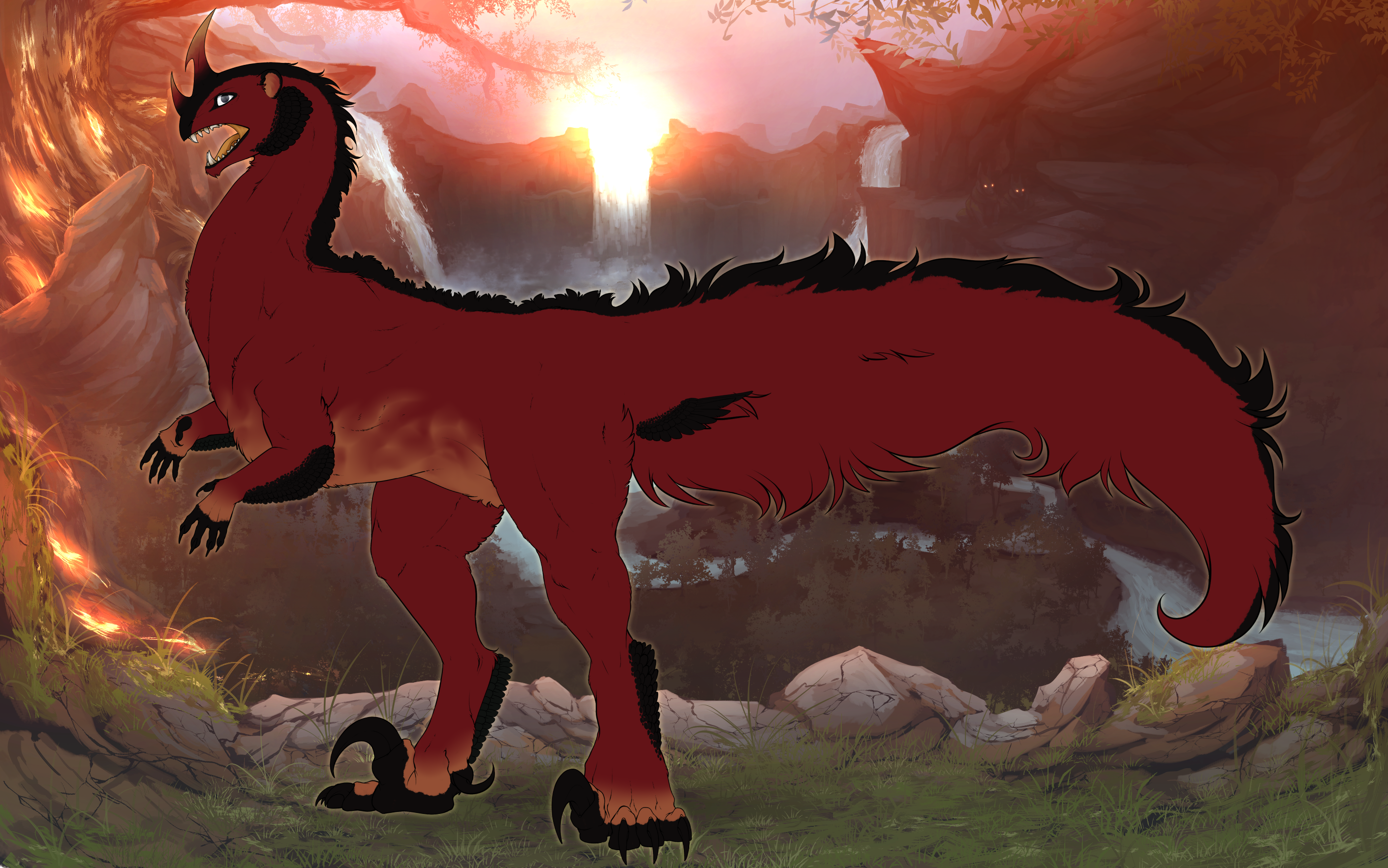Border
nBr/BrBr
Border is a marking that affects other markings! It, as its name says, gives it a different colored border. This border may have different edges compared to the marking it is affecting as well!
If Border is the only marking present, it will create a stripe down the kukuri's spine.
Non-dominant Border may affect up to 1 marking.
Dominant Border may affect up to 3 markings, including itself should it be the only marking present.
Mosaic and Mirage are not affected by border.
Edge allowances
 Hard
Hard Soft
Soft Textured
Textured Gradient
GradientSymmetry allowances

 Can be symmetrical or asymmetrical
Can be symmetrical or asymmetricalColor Allowances:

 Can be lighter or darker
Can be lighter or darker
A Guide to Border
Edges
Inner and outer edges of Border have different rules!
Border's outer edge doesn't need to follow the edge rules of the marking it is affecting.
However, the inner edge of Border (the side that touches the marking it affects), must reflect allowed edges by
said marking.
Example, Pangare must still be blended where it touches Border, but the part of the Border which does not touch Pangare can be
hard edged, soft or blended.
Border on white markings
Border affects white markings just like it would any others!
This means you could potentially create a soft edge on Piebald, or give it a faint halo for example!
At the same time, with markings with several parts (Koi, Calico, etc), Border must affect both parts of the marking.
The border around the marking must also remain the same color for both parts.
For example, if you use grey on the white part of Koi,
you must also use grey on the dark part of Koi!
Styles of Border
Border on bordered markings
On markings like Marbled, Rosette, Spotted or Clown - which already have a border around them - there are multiple ways of creating Border.It can create a double border outside of the original border which can be lighter or darker than the markings colors.
It can replace the original border of these markings and override the "darker/lighter" rule on them
Or it can completely remove the border by copying the color inside of the marking.
Border with iridescent
Border and Iridescent together can create some unique effects!Iridescent may affect Border itself, creating a bright and saturated ring around a marking!
It can affect only the marking, and not the border around it.
Or it may affect both!
Border on its Own
When Border is the only marking present on a kuku, it will create a large dorsal (back) stripe on the kukuri. This stripe is required if the kukuri doesnt have any other markings!In the event that gradient is also present, it will affect the Border's dorsal stripe!
What to Avoid
Visibility
Border may be thick, but it shouldn't greatly extend the marking's normal range.Border should also be easily visible without squinting, so making border's colors too close to the marking's color is not allowed.
Similarly to the rules regarding thickness, Border also shouldn't greatly cover or ingulf the marking it affects!
Colors and Edges
Border can not be an unnatural color without Iridescent!Border's inner edge must match the edge required by the marking! It can not change a marking's edge type!
Border should affect the whole marking, not only parts of it!
Border Ranges
Only Applicable if Border is the only mark
Border may appear in its allowed ranges
Minimum
The minimum area of a kukuri's body Border should cover
The minimum area of a kukuri's body Border should cover
nBr
The maximum area of a kukuri's body recessive Border can cover
The maximum area of a kukuri's body recessive Border can cover
BrBr
The maximum area of a kukuri's body dominant Border can cover
The maximum area of a kukuri's body dominant Border can cover
Border may appear in its allowed ranges
Minimum
The minimum area of a kukuri's body Border should cover
The minimum area of a kukuri's body Border should cover
nBr
The maximum area of a kukuri's body recessive Border can cover
The maximum area of a kukuri's body recessive Border can cover
BrBr
The maximum area of a kukuri's body dominant Border can cover
The maximum area of a kukuri's body dominant Border can cover
Border may appear in its allowed ranges
Minimum
The minimum area of a kukuri's body Border should cover
The minimum area of a kukuri's body Border should cover
nBr
The maximum area of a kukuri's body recessive Border can cover
The maximum area of a kukuri's body recessive Border can cover
BrBr
The maximum area of a kukuri's body dominant Border can cover
The maximum area of a kukuri's body dominant Border can cover
Border may appear in its allowed ranges
Minimum
The minimum area of a kukuri's body Border should cover
The minimum area of a kukuri's body Border should cover
nBr
The maximum area of a kukuri's body recessive Border can cover
The maximum area of a kukuri's body recessive Border can cover
BrBr
The maximum area of a kukuri's body dominant Border can cover
The maximum area of a kukuri's body dominant Border can cover
